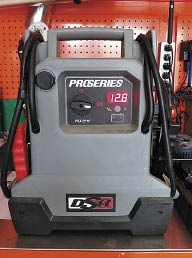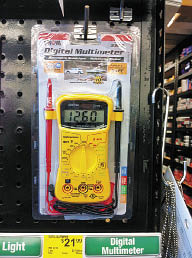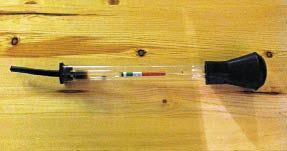
Well it's summertime and in this column I would like to share some maintenance tips for all those onboard batteries. Let's get started by saying battery maintenance should be performed once a month. I have some suggestions that can sure come in handy in the event of a weak or dead battery.
First you need a quality battery jump box that is charged and ready to save the day and possibly your boat.
Also, if you can't see investing in a jump box, certainly you should have on hand a heavy-gauge set of jumper cables long enough to reach another battery. Your boat has multiple batteries and probably in multiple locations. Make yourself aware of their location and what they control. Examples are engine batteries, generator batteries, cabin batteries for commode and lighting etc., electric thruster batteries and inverter batteries. Once you've located all the batteries make a list of them, voltage size 6- or 12-volt and function for future reference-similar to your electrical panel at home. The simple way to distinguish a 6-volt from a 12-volt is the number of filler caps on top: three caps are 6-volt and six caps are 12-volt.
Safety Precautions
Make sure you have proper safety goggles on and you're not wearing any jewelry. Inspect each and every connection one battery at a time. If corrosion is present, remove one cable connection at a time, making certain it doesn't come into contact with anything else. Remember your boat is most likely aluminum and is a conductor!
Clean all terminals with a hand battery post cleaner and re-install. Once all terminals are clean in this location you are ready to move on with your inspection and service. Note: you can't check a dead battery, it first must be charged. Having said that, you need to unplug the onboard battery charger or chargers and check battery voltage on each battery with a multi meter.
The purpose for unplugging the charger is so you can read the battery's voltage and not the charger's output voltage. Each 12-volt battery should read approximately 12.5 to 13.5 volts and 6-volt batteries at 6.5 to 7.5 volts. Carefully unscrew or pry off battery filler caps. If they are round they un-screw and if they look like flat rectangles they pry off.
Once this is done take a flashlight-not a match or a lighter because it could explode-and look in each hole or cell. You are checking for water. There should be a noticeable ring or indention approximately a half inch down in the opening. If not full to that mark, use a battery filler bottle and fill it with distilled water (not tap water). Repeat this at every cell at every battery.
Using a battery hydrometer available at any auto parts store, insert it down in the opening and draw out fluid for a gravity reading to determine the battery's condition. It's really not as complicated as it sounds; it's like using an eye dropper. Most have balls or a disc similar to an antifreeze checker. Read the scale and make condition notes. Empty and continue one cell at a time until finished. Make note if any one cell falls below the standard. If it does, most likely the battery is bad. If all batteries check out okay, all is well. If not replace as necessary.
Don't forget to plug in your chargers. After doing that, it's a good idea to take your meter and check output voltage of your chargers. You do this simply by probing the positive and negative terminals on the battery. They should read approximately 12.8 to 14.2 volts. A little side note here: if they are not working, check your GFI box where the charger is plugged in. There should be a red button and a black button. They sometimes will trip and you will have no chargers. In most cases re-setting it will fix that problem.
Now for how I really feel about batteries. There are batteries on the market that are not flooded cell and rarely if ever need service. Don't be confused by so called maintenance-free batteries. If they contain electrolyte, they need service. I'm referring to absorbed glass matt (AGM) batteries. These batteries were first designed for military use and have incredible longevity. In most cases one of these can replace two conventional flooded cell batteries. Now we're getting somewhere! And possibly with more cranking amps and reserve capacity they also can sit up to two years unattended and still be at full power.
Here are just a few benefits. These batteries virtually have no off gassing from the electrolyte so battery explosion risk is reduced and you can expect 8-10 years of service from these batteries. Some have impressive 100 percent replacement warranties for up to four years. There is no need for battery boxes; remember they are only needed to contain spilling electrolyte from off gassing and boiling over. If you want more information on these batteries, size, cost, where to buy them, etc., just ask. As in all articles, if I didn't cover what you needed please ask a question and I or an expert will reply back to you.



